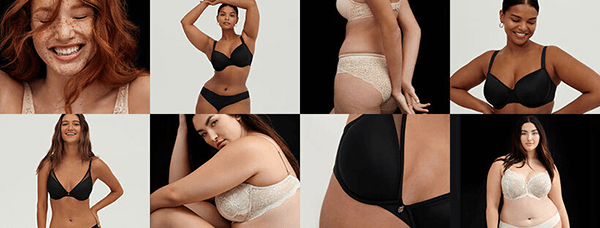Diversity in Advertising Means a Lot — to Both Brands and Consumers

The face of the American consumer is changing — 48% of post-millennials in the US are now nonwhite; and 1 in 6 Gen Z adults identifies as LGBTQ. As the demographics in the United States evolve and change, you might expect to see the same shifts depicted in ads. However, diversity and inclusion in advertisements still falls short of representing the true variety of people and identities found in today’s consumer.
Why Diversity in Advertising Matters
The results of this (potentially unconscious) bias are not only frustrating for marginalized/underrepresented groups, but a major misstep for the brands that fail to depict them in their ads, as well. By excluding people of a variety of races, genders (and more), brands are losing opportunities to be relevant to more diverse audiences and communities. 58% of LGBTQ+ respondents to one survey say that they have stopped buying from a brand because of lack of representation in advertising, while 53% of African Americans have stopped supporting a brand because it didn’t represent their identity.
For example, exclusively depicting heterosexual couples in ads for a wedding planning service or dating app might make LGBTQ+ couples feel that these services or products aren’t meant for them.
By including a diverse range of couples, The Knot, a wedding planning website, is able to signal to potential customers that their product is inclusive and welcoming to same sex couples.
More Than Just the ‘Right Thing To Do,’ Inclusion Also Drives Real Business Results
Businesses that are doing D&I right aren’t just promoting more inclusive media, they’re see real business benefits, too. According to a Google analysis, diversity and inclusion in advertising can make a substantial impact in brand sentiment among underrepresented groups. They found that 69% of black consumers were more likely to purchase from a brand that includes positive portrayals of their race/ethnicity. The same study also found that 70% of black millennials say they are more likely to buy from brands that take a stand on race-related issues.
Similarly, they found that 71% LGBTQ+ customers were more likely to trust and interact with digital ads from brands that authentically represent members of the LGBTQ+ community. Even people who do not belong to the LGBTQ+ community look favorably on companies that feature LGBTQ+ people in their advertising. A P&G and GLAAD study showed that, with 68% of Non-LGBTQ+ respondents reporting that seeing LGBTQ people in advertising makes them feel better about buying products from that company.
WITHIN Executive Producer Steen Wichmann has seen momentum recently, “Over the last three or four years there’s been a big call for more inclusion and diversity in projects across the board in advertising and marketing. Once, it was mainly creative agencies pushing for this, but now we see more brands leading those conversations and being proactive about casting diverse talent in their ads.”
Diversity Is Multidimensional
Now, when we talk about diversity, it’s not simply about man vs. woman, or black vs. white. Diversity comprises many facets of the human experience. When casting for talent, producers should consider:
- Age
- Race/Ethnicity
- Body shape/size
- Disability/ability status
- Sexual orientation
- Gender identity
Intimates brand ThirdLove has made their mark by portraying themselves as the anti-Victoria’s Secret by casting diverse models across the age, race, and body size spectrum.
Discover Who Your Customers Really Are
With such a wide range of diversity in the world, how can you pick a place to start? One of the best ways to focus your efforts is to understand the diversity that already exists within your own customer base. Gathering and analyzing customer demographic data after purchase or via email can be a great low-cost way to better understand your customers, and the data may surprise you!
Don’t rely solely on your customer personas to dictate the type of people you cast in your ads and marketing campaigns. Adhering too strictly to depictions of who you think your typical customer is may artificially limit your brand’s reach. After seeing your advertisements, would a person of color, or member of the LGBTQ+ community be likely to consider themselves a potential customer? The more people who can see themselves in a brand, the more likely they are to convert.
The Importance of Authenticity
One of the best ways to gain traction is to intentionally create more authentic content. Steen notes that “authenticity in content, like what is seen in User Generated Content (UGC) on social, definitely has the power to improve performance in an account. Without diversity, things can feel inauthentic.”
So how do you make sure that your content is hitting the authenticity mark? A great place to start is by listening to the diverse voices within your own organization for their thoughts, opinions, and experiences. How would they like to be depicted? What would they like to see?
“Having a diverse and broad perspective throughout the creative process is so important,” Creative Producer Quinn Barker explains. ”Otherwise, if everyone on your team looks the same, it can become an echo chamber.”
Another way to create positive and authentic representations is to stop and consult members of that specific group at large. WITHIN Creative Project Manager Oli Pleydle sees a lot of potential in tapping into influencers who are trusted voices in their own communities.
“Due to the expansion of social media like TikTok and YouTube, there is this explosion of voices that are out there that are able to give perspective that hold weight and also have huge followings of their own,” says Pleydle. “This allows you to pass the conversation to others, let them bring their unique perspective to your audience and platform.”
A Paradigm Shift
The focus on Diversity and Inclusion isn’t a fad or a trend; it’s a paradigm shift with staying power. As society puts more emphasis on diversity and demands more inclusion in all areas of life, failing to authentically address the full breadth of your audience in advertising is going to hold your brand back. Diversity and Inclusion is no longer a “nice-to-have,” but a “must-have” going forward. But remember — the goal isn’t merely to check a box, it’s to reach out to show groups that you empathize with them and want to become a brand they trust.
To learn more about crafting effective digital marketing campaigns for your audiences, let’s talk.

